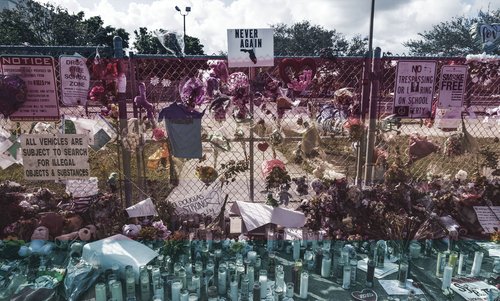
SRL invites students to reflect or conduct interviews about how mass shootings affect youth, schools, and teachers—both in the U.S. and around the world. This is an opportunity to elevate teen voices and perspectives on safety, mental health, and societal change.
Encourage full-sentence responses. For example: “I want elected officials to…” or “In my country, we…”
NOTE: participants must sign our media release if they are under 18.
Transcribe your footage using Otter or similar service.
Review the recording; re-record if necessary.
Students will:
Day 1–2: Introduction to media literacy, bias, and framing using real news clips.
Day 3–5: Students analyze media coverage and share findings.
Day 6–9: Scriptwriting, research integration, and team planning.
Day 10–13: Filming and editing tutorials + production time.
Day 14–15: Final edits and presentations. Class discussion on media influence.
Mass shootings deeply impact student mental health, school safety, and public discourse. Student journalism gives young people a platform to process, inform, and call for change.
Invite international students (or students with global backgrounds) to compare safety measures in schools and media coverage of gun violence outside the U.S. This fosters cross-cultural dialogue and highlights different approaches to preventing school violence.
Journalism is the activity of gathering, assessing, creating, and presenting news and information.
Belief that someone or something is reliable, good, honest, effective, etc.
Media refers to all electronic or digital means and print or artistic visuals used to transmit messages.
All forms of media created with the purpose of informing the public and delivering news through specific mediums such as radio and broadcast stations, digital news organizations and others.
A subject or problem that people are thinking and talking about
A group of people who live in the same area (such as a city, town, or neighborhood). It can also be a group of people who have the same interests, religion, race, etc.
Immediate, current information and events are newsworthy because they have just recently occurred. It’s news because it’s “new.”
Investigating and explaining, in a critical and clear-eyed way, how people try to solve widely shared problems. Solutions journalism focuses on responses to problems.
People are interested in other people. Everyone has something to celebrate and something to complain about. We like unusual stories of people who accomplish amazing feats or handle a life crisis because we can identify with them.
The people who read, watch and consume news. Often, journalists think about audience and newsworthiness in similar ways. How will the news story serve their local or national audience? Who am I writing the story for and why?
A conversation between two or more people where the purpose is to gather information and facts. The interviewer asks questions and the interviewee provides information based on their knowledge about a specific topic or issue.
When violence strikes or when people argue about actions, events, ideas or policies, we care. Conflict and controversy attract our attention by highlighting problems or differences within the community or between groups. Sometimes conflict can be subtle and manifest as tension.
The term “empathy” is used to describe a wide range of experiences. A generally definition is the ability to sense other people’s emotions, coupled with the ability to imagine what someone else might be thinking or feeling. In media-making, creators can have empathy for their subjects and the audience can empathize with the characters.
Journalism
Civics
Gun Violence
School Safety
Mental Health
Social Media
Projects
Beginner
Intermediate
Advanced
Camera or Mobile Phone
Camera
Mobile Phone
Internet
Notebook
2-4 hours
USE/DOWNLOAD: RAPID RESPONSES SKILLS AND STANDARDS CHECKLIST
EXAMPLE OF DESIRED COMPOSITION FOR RAPID RESPONSES:
Subject is looking at the camera, centered, from the chest up, normal headroom.
